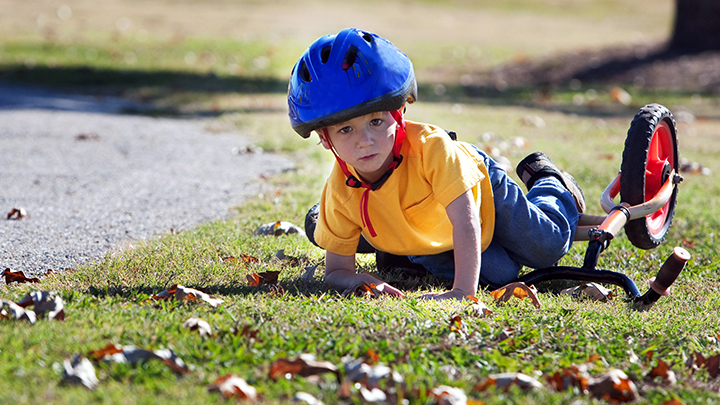
June 6, 2018

Falls are the leading cause of concussions for children. Learn what you can do to prevent them.
Story by Nora Ansah
Parachute Safe Kids Week is all about getting a jump on injury prevention in children. And this year’s campaign, which runs June 4 to 10, focuses on concussion awareness.
“One of the myths about concussion is that it only happens while playing sports,” says Kathryn Koliaska, Medical Officer of Health, Alberta Health Services (AHS).
“In fact, a concussion can occur in a variety of settings, such as the home or playground, and during activities such as playing, climbing, or riding in a vehicle. The impact caused by a motor vehicle collision can also cause a concussion.”
A concussion is a brain injury resulting from an impact to the head, face, neck or body. It can happen through a variety of activities and to anyone at any age.
AHS’ Provincial Injury Prevention Program supports Parachute’s Safe Kids Week 2018 and wants to help keep kids safe from a concussion at home, at play and on the road.
The leading causes of concussion are falls. In 2016, falls were main reason for emergency department and urgent care visits for Albertan children aged one to four. Falls also accounted for approximately 44 per cent of hospitalized concussions for Albertan children in the same age group between 2011 and 2016.
Awareness and mindfulness about unsafe situations can help avert injury.
“During Parachute Safe Kids Week and beyond, we hope health providers will educate parents and caregivers about fall prevention and what they can do to prevent injuries,” says Koliaska.
Some ways in which injuries can be prevented include removing hazards in the home: using gates to block stairs; using window safety devices; as well as wearing helmets during activities such as biking and skateboarding.
It can be difficult to determine if a person has a concussion, especially in a young child.
“It is important for parents to know the signs and symptoms of a concussion to ensure proper management and recovery. But the best way to avoid this type of brain injury is to prevent them,” says Koliaska.
According to MyHealth.Alberta, signs and symptoms of a concussion may include but are not limited to: not thinking clearly or being able to concentrate; headache, nausea and vomiting; dizziness and balance problems; vision problems; light or noise sensitivity; and sleeping problems.
The Provincial Injury Prevention Program (PIPP) provides information and resources to help health providers understand the impact of injury to Albertans and how to prevent injuries in people in different stages of their lives, from newborn to older adult. More information and resources on concussion and fall prevention for parents and providers can be found on the Alberta Health Services PIPP webpage. For example, resources such as the Child and Youth – Best Practice Concussion Resources for Players, Coaches, Caregivers and Medical Professionals toolkit provides health provider focused resources on concussion, diagnosis, and treatment.